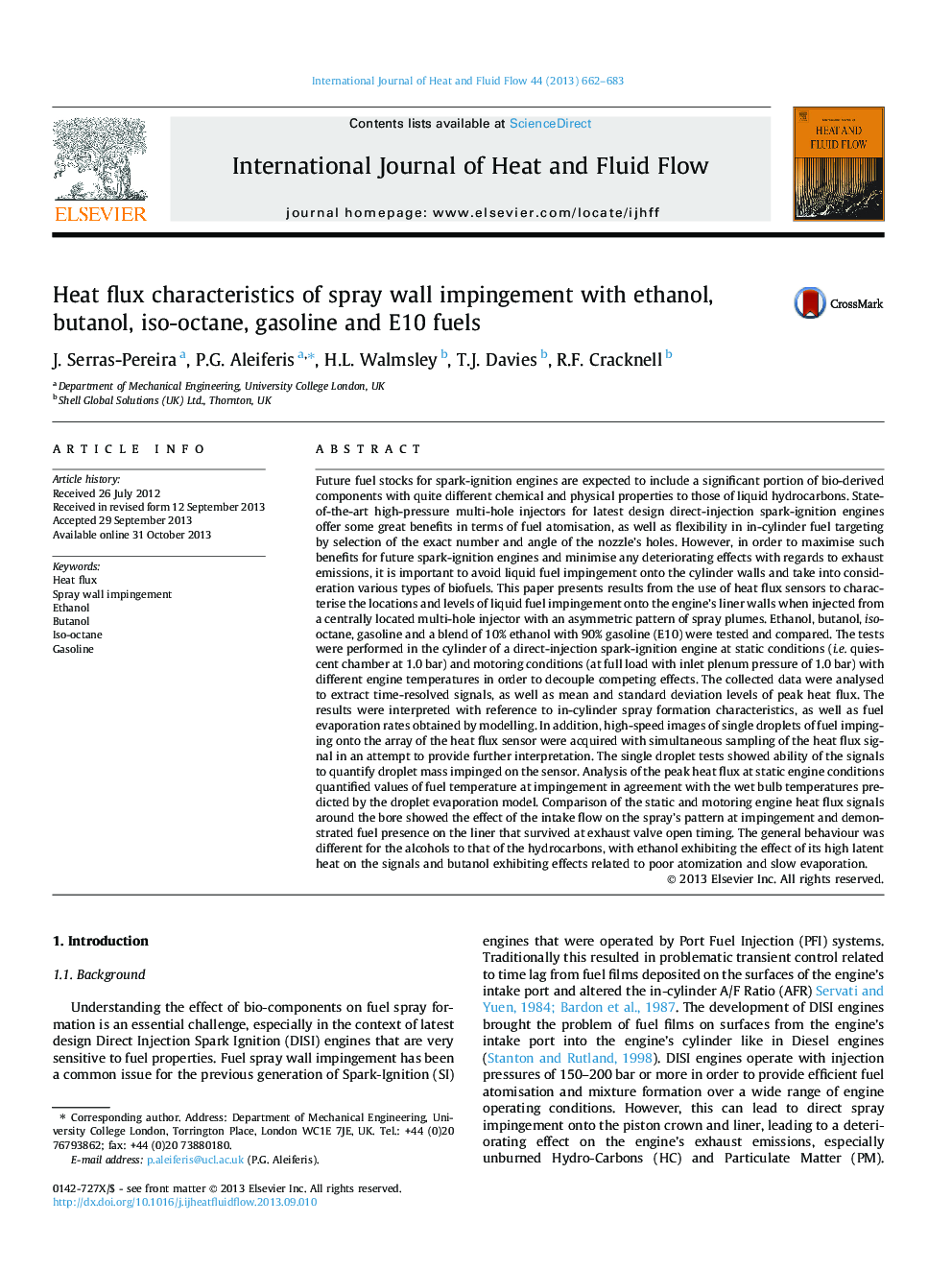| Article ID | Journal | Published Year | Pages | File Type |
|---|---|---|---|---|
| 655397 | International Journal of Heat and Fluid Flow | 2013 | 22 Pages |
Abstract
Future fuel stocks for spark-ignition engines are expected to include a significant portion of bio-derived components with quite different chemical and physical properties to those of liquid hydrocarbons. State-of-the-art high-pressure multi-hole injectors for latest design direct-injection spark-ignition engines offer some great benefits in terms of fuel atomisation, as well as flexibility in in-cylinder fuel targeting by selection of the exact number and angle of the nozzle's holes. However, in order to maximise such benefits for future spark-ignition engines and minimise any deteriorating effects with regards to exhaust emissions, it is important to avoid liquid fuel impingement onto the cylinder walls and take into consideration various types of biofuels. This paper presents results from the use of heat flux sensors to characterise the locations and levels of liquid fuel impingement onto the engine's liner walls when injected from a centrally located multi-hole injector with an asymmetric pattern of spray plumes. Ethanol, butanol, iso-octane, gasoline and a blend of 10% ethanol with 90% gasoline (E10) were tested and compared. The tests were performed in the cylinder of a direct-injection spark-ignition engine at static conditions (i.e. quiescent chamber at 1.0Â bar) and motoring conditions (at full load with inlet plenum pressure of 1.0Â bar) with different engine temperatures in order to decouple competing effects. The collected data were analysed to extract time-resolved signals, as well as mean and standard deviation levels of peak heat flux. The results were interpreted with reference to in-cylinder spray formation characteristics, as well as fuel evaporation rates obtained by modelling. In addition, high-speed images of single droplets of fuel impinging onto the array of the heat flux sensor were acquired with simultaneous sampling of the heat flux signal in an attempt to provide further interpretation. The single droplet tests showed ability of the signals to quantify droplet mass impinged on the sensor. Analysis of the peak heat flux at static engine conditions quantified values of fuel temperature at impingement in agreement with the wet bulb temperatures predicted by the droplet evaporation model. Comparison of the static and motoring engine heat flux signals around the bore showed the effect of the intake flow on the spray's pattern at impingement and demonstrated fuel presence on the liner that survived at exhaust valve open timing. The general behaviour was different for the alcohols to that of the hydrocarbons, with ethanol exhibiting the effect of its high latent heat on the signals and butanol exhibiting effects related to poor atomization and slow evaporation.
Related Topics
Physical Sciences and Engineering
Chemical Engineering
Fluid Flow and Transfer Processes
Authors
J. Serras-Pereira, P.G. Aleiferis, H.L. Walmsley, T.J. Davies, R.F. Cracknell,
